Style Profile | Brown Ale
Every other month PorchDrinking will be tackling a style profile. The idea being to get the word out and identify beers you can use to calibrate your senses to better enjoy the beer you consume. Beer can be a complex topic but worry not because PorchDrinking is here to show you the ropes – like an older brother or sister, only less abuse and more information.
We will be covering brown ales this month. The style truly fits the transition from fall to winter because it is a transition beer, sitting smack in the middle between the pale beers and the inky porters and stouts. Many of the classic examples selected for the style profiles will be widely available whenever possible in order to allow you to drink along side the article. Prost!
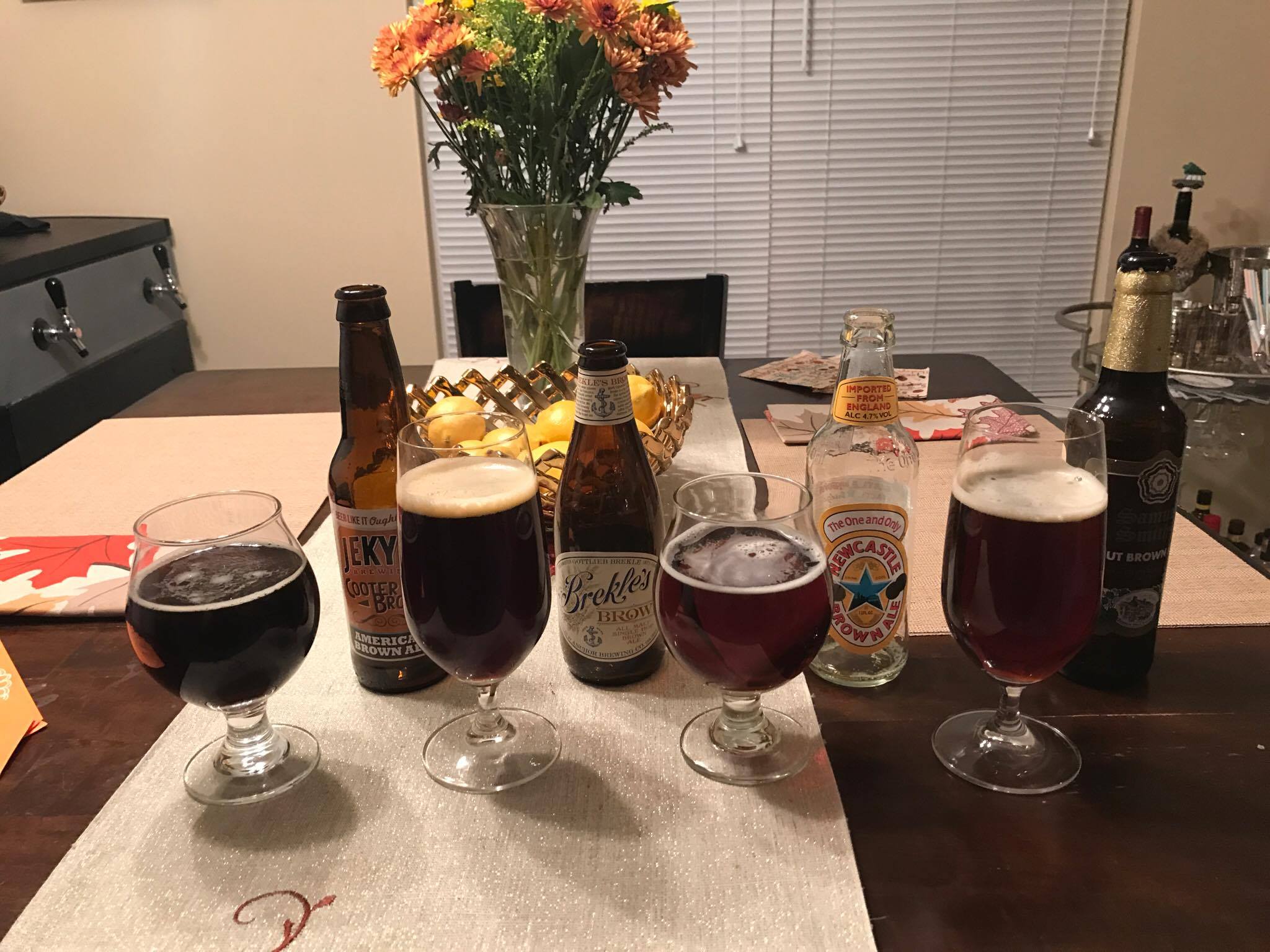
History
Brown ale can trace its lineage pretty far back – and we’re not talking “Back to the Future” or the previous Cubs’ World Series far back either. More like 1700’s way back. In fact, the original term “brown beer” was used in much the same way that modern drinkers today identify “dark beers” as stouts, porters, brown ales, and anything else not pale or golden in color. In fact, back in those days porters and stouts were very popular and “brown ales” were common place because malt was prepared for brewing by being kilned over hardwood fires and thus darkened the malt and made it difficult to obtain the pale beers that would become common place later. As technology improved and the styles separated into more distinctively different concepts, porters and stouts were often made from the initial mash of the malts and then in order to save money and improve production output a second “brown beer” was made from the second running of the same malt. That is, the brewers of the 1800’s would mix more water into the mash and extract a second batch of wort to be boiled and fermented into beer. The modern brown ales that we know and enjoy today have some similarity to the historic styles but are really very different. Modern brown ales align themselves along two distinct paths, American brown Ales and English brown ales.
13B British Brown Ales
According to the 2015 BJCP style guides British brown ale should be, “malty, brown caramel-centric British ale without the roasted flavors of a porter.” There should be nutty, toffee, caramel or light chocolate aromas and flavors. However, British brown ales can also feature faint or light floral or earthy hops aromas but there should be faint to no hop flavors. Due to the English yeast strains often used in the production of this beer there could be some fruity esters but they should not be overpowering at all. The British brown ale should also feature a good medium body and medium carbonation. The category is pretty wide ranging but the general characteristics favor malts without pushing roast.
Without further ado, let’s drink British Brown Ales, chaps!
Classic examples of British brown ale can be found relatively easy at quality bottle shops. At my local bottle shop I was able to source two, Samuel Smith’s Nut Brown Ale and Heineken’s Newcastle Brown Ale, very affordably.
Samuel Smith’s Nut Brown Ale
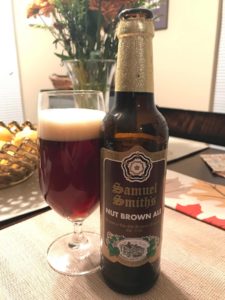 The Sam Smith’s Nut Brown ale comes out of the gate with caramel sweetness. The hops are barely there and rather indistinguishable. The hops mostly provide a bitterness to clear the sweetness of the malt from the tongue and stopping the beer from becoming offensively sweet. It certainly has a medium mouth feel almost bordering on heavy but the finish is clean and gets out of the way quickly. Upon the initial pour a big tan head erupted from this beer that hung around like it didn’t have a job or anywhere in particular to go. Follow up tastings bring about toffee and butterscotch flavors. This beer is nothing super fancy. It won’t win you any credit with your beer snob friends. Captain Ahab isn’t sailing the rough seas of the bottle shop looking for this beer but that gold foil neck isn’t lying this beer is top notch. It is clearly brewed well and highlights many of the main points of the style profile. This beer is right smack in the middle of body, ABV, and flavor intensity lending it the ability to easily pair with light food dishes and yet, still hold its own against heavier dishes. It would pair exceptionally well with spicy foods, smoked meats, and many of the roasted meats and holiday dishes coming up in the next month.
The Sam Smith’s Nut Brown ale comes out of the gate with caramel sweetness. The hops are barely there and rather indistinguishable. The hops mostly provide a bitterness to clear the sweetness of the malt from the tongue and stopping the beer from becoming offensively sweet. It certainly has a medium mouth feel almost bordering on heavy but the finish is clean and gets out of the way quickly. Upon the initial pour a big tan head erupted from this beer that hung around like it didn’t have a job or anywhere in particular to go. Follow up tastings bring about toffee and butterscotch flavors. This beer is nothing super fancy. It won’t win you any credit with your beer snob friends. Captain Ahab isn’t sailing the rough seas of the bottle shop looking for this beer but that gold foil neck isn’t lying this beer is top notch. It is clearly brewed well and highlights many of the main points of the style profile. This beer is right smack in the middle of body, ABV, and flavor intensity lending it the ability to easily pair with light food dishes and yet, still hold its own against heavier dishes. It would pair exceptionally well with spicy foods, smoked meats, and many of the roasted meats and holiday dishes coming up in the next month.
Newcastle Brown
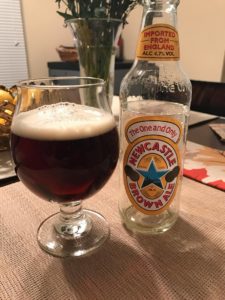 Ale has a notorious nick name in my family, “noogie brown”. My father-in-law was born and raised in New Castle and loved to tell me the mythos and stories surrounding one of his favorite beers. Allegedly there’s a special ward in the hospital for the people who drank it but the myths in this case serve to only amplify the mystique of the beer. The first sip is far drier than the Sam Smith Nut Brown. The initial aroma has a faint touch of sulfur that quickly gives way to caramel malt and a light floral hop scent. There is absolutely no roast character in this beer. The malty sweet taste is balanced by a slight floral hop presence and a light mouth feel that quickly washes away clean and begs for another sip. Newcastle Brown Ale poured a tan head that quickly dissipated. Searching deeper into the flavor produces a faint hint of minerality throughout the taste that is not over powering or mineral water like. This beer is incredibly light and deceptive considering its color. This beer is best paired with sporting events, binge watching shows and comfort foods such as mac and cheese or fondue. Don’t let the unassuming bottle, the simple label, or the myths and lame nick names fool you this beer is a classic example for a reason. It is incredibly refreshing without being overpowering or offensive in any way. If you have friends that you take to bars and their first question to the bartender is “what’s the lightest beer you have?” put this in their hands and watch them realize that lightness does not have to mean flavorless and dull.
Ale has a notorious nick name in my family, “noogie brown”. My father-in-law was born and raised in New Castle and loved to tell me the mythos and stories surrounding one of his favorite beers. Allegedly there’s a special ward in the hospital for the people who drank it but the myths in this case serve to only amplify the mystique of the beer. The first sip is far drier than the Sam Smith Nut Brown. The initial aroma has a faint touch of sulfur that quickly gives way to caramel malt and a light floral hop scent. There is absolutely no roast character in this beer. The malty sweet taste is balanced by a slight floral hop presence and a light mouth feel that quickly washes away clean and begs for another sip. Newcastle Brown Ale poured a tan head that quickly dissipated. Searching deeper into the flavor produces a faint hint of minerality throughout the taste that is not over powering or mineral water like. This beer is incredibly light and deceptive considering its color. This beer is best paired with sporting events, binge watching shows and comfort foods such as mac and cheese or fondue. Don’t let the unassuming bottle, the simple label, or the myths and lame nick names fool you this beer is a classic example for a reason. It is incredibly refreshing without being overpowering or offensive in any way. If you have friends that you take to bars and their first question to the bartender is “what’s the lightest beer you have?” put this in their hands and watch them realize that lightness does not have to mean flavorless and dull.
19C American Brown Ale
According to the 2015 BJCP style guides American brown ale should be, “malty but hoppy beer frequently with chocolate and caramel flavors. The hop flavor and aroma complements and enhances the malt rather than clashing with it.” American brown ales feature similar aroma and flavors to their British counter parts but can also feature medium levels of citrus, fruity, or even tropical hop aromas and flavors in line with the malt characteristics. The character from dark malts can also be more robust in the aroma but should not be in the style of a porter. In essence that can be interpreted to mean that some roastyness could be appropriate as long as it does not become the main feature point of the beer.
‘Merica Brown Ales
Classic examples of American Brown Ales can also be found relatively easily. My local bottle shop had more than a few of them available such as Bell’s Brewery‘s Best Brown, Big Sky Brewing‘s Moose Drool Brown Ale, Brooklyn Brewery‘s Brown Ale and Smuttynose Brewing Co.’s Old Brown Dog Ale. However, I chose one of my personal favorites Anchor Brewing’s Brekle’s Brown and being part of the PorchDrinking southeast crew, I had to represent with Jekyll Brewing Company’s Cooter Brown.
Anchor Brewing Breckle’s Brown
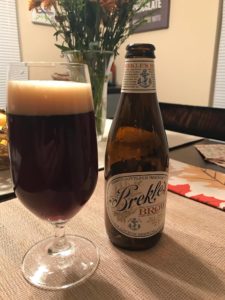 Anchor Brewing Breckle’s Brown immediately brings coffee, toffee, caramel and a slight hint of roast flavor on the first taste. There are clearly hops there too but by no means are they clashing with or even contending with the malt. The malt is the clear star of this beer. The roast while distinct is not in the porter range. The hop note is big in the aroma and comes off as a mix between floral and citrus. The flavor reminds me of a Riesen candy with a bit of coffee. Upon reading the label it’s apparently all Citra hops which frankly is presenting totally different then Citra hops would in an IPA. The Citra hops seem to play with the roast and malty flavors by coming out in a more subdued citrus presence that reminds me of coffee with just a spritz of orange or lemon peel expressed into the beverage or the way citrus notes can express in cold brew coffees. When poured the beer produced a very light tan head almost off white that lasted decently. I’ve always been a fan of Brekle’s Brown and its plain delicious. I would pair this beer with pizza, fettuccine alfredo, aged Gouda or parmesan cheeses.
Anchor Brewing Breckle’s Brown immediately brings coffee, toffee, caramel and a slight hint of roast flavor on the first taste. There are clearly hops there too but by no means are they clashing with or even contending with the malt. The malt is the clear star of this beer. The roast while distinct is not in the porter range. The hop note is big in the aroma and comes off as a mix between floral and citrus. The flavor reminds me of a Riesen candy with a bit of coffee. Upon reading the label it’s apparently all Citra hops which frankly is presenting totally different then Citra hops would in an IPA. The Citra hops seem to play with the roast and malty flavors by coming out in a more subdued citrus presence that reminds me of coffee with just a spritz of orange or lemon peel expressed into the beverage or the way citrus notes can express in cold brew coffees. When poured the beer produced a very light tan head almost off white that lasted decently. I’ve always been a fan of Brekle’s Brown and its plain delicious. I would pair this beer with pizza, fettuccine alfredo, aged Gouda or parmesan cheeses.
Jekyll Brewing Cooter Brown
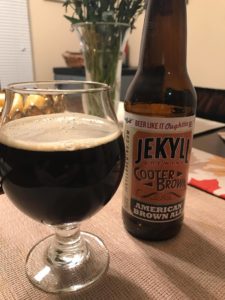 Jekyll Brewing Company Cooter Brown comes out swinging with an aroma that has heavy roast and malt. However, the taste is not as heavy on the roast as the aroma would lead you to think. Jekyll is really trying to take this beer right to the border of porter territory. In a way it has bravado to it like I did when I used to bug my little brother by trying to get as close to touching him without actually touching him. The finish is nicely dry and I find myself drinking this pretty quickly. The hops are not particularly standing out that any one characteristic such as citrus can be picked out but rather a general bitterness presents itself. The finish is roasty and toffee but with an almost burnt sugar like flavor like the crust on top of a crème brulee. When I poured this beer it produced a tan almost brown head that dissipated quickly. I would pair this beer with crème brulee, creamy deserts, cheese cake or pecan pie.
Jekyll Brewing Company Cooter Brown comes out swinging with an aroma that has heavy roast and malt. However, the taste is not as heavy on the roast as the aroma would lead you to think. Jekyll is really trying to take this beer right to the border of porter territory. In a way it has bravado to it like I did when I used to bug my little brother by trying to get as close to touching him without actually touching him. The finish is nicely dry and I find myself drinking this pretty quickly. The hops are not particularly standing out that any one characteristic such as citrus can be picked out but rather a general bitterness presents itself. The finish is roasty and toffee but with an almost burnt sugar like flavor like the crust on top of a crème brulee. When I poured this beer it produced a tan almost brown head that dissipated quickly. I would pair this beer with crème brulee, creamy deserts, cheese cake or pecan pie.
In Conclusion
Brown ales are really underrated in my opinion. Whenever you feel like taking a step back from the chase and quest for rare and extreme beers I would urge you to revisit the hidden gems that are hanging out in the brown ale section of your bottle shop. To be executed as well as some of the classic examples requires a brewery team to have impeccable command of the ingredients and process of beer production. But outside of the classic styles there is also room for creative expression and blurring or pushing boundaries as well as evidence by Jekyll Brewing Company’s Cooter Brown. The category is really very diverse and a perfect beer style to dive into as fall draws to a close and the winter season looms on the horizon.
-
Brown Ale was totally unrelated to Brown Beer. Two toally differnt classes of beer that didn’t even come in the same size barrel and were produced in different breweries.
No-one ever parti-gyled a Brown Ale with a Porter and Stout. 18th-century Brown Ale has no connection with modern Brown Ale, other than the name. Modern Brown Ale only evolve in the 20th-century. No beer called Brown Ale was brewed in the 19th century.
I hate to say this, but you’re totally clueless about parti-gyling. Check out my blog if you want to see how it really works.
-
Ron please see the response below was having some issues with posting the comment but it went through as a new comment
-
-
Ron thanks for your response! I loved your pieces on experimental homebrewing, beersmith, and of course your prolific written works. It must be a real treat to get to talk with so many folks about beer and brewing. Fan boying aside I can see you have some problems with the brief historical information section in this article.
First, according to the BJCP 2015 style guide history section from British Brown Ale, “Brown ale has a long history in Great Britain, although several different types of products used that name at various times. Modern brown ale is a 20th century creation as a bottled product; it is not the same as historical products of the same name.” Which in my article I echo that same sentiment by expressing that, “the modern brown ales that we know and enjoy today have some similarity to the historic styles but are really very different.” In your opinion does the style guideline get the basic linage of the style wrong? I mean yes the two beers are entirely different which we both seem to agree on but do the two styles have absolutely no connection? I have heard some rumblings that perhaps the style guidelines may not be as historically accurate as they could be. I speculate this inaccuracy is likely due to a bit of simplification for the sake of discourse amongst home brewers. Do you suspect this is one of the cases where the style guideline has it wrong?
Secondly, in respect to parti-gyling and brown ale according to Brad Smith in his article about Brown Ales, which seems to be referencing Ray Daniels’ Brewing Classic Styles, “In the early 1800’s, some distinction was being made between Stouts, Porters and Milds. In many cases Brown ale was produced by making a Stout or Porter with the first runnings and then collecting the second runnings of the Mash to produce Brown ales.” Now I had not heard of any inconsistency with the historical record and either Brad nor Ray’s work. I assume you have done far more research into the historical record, so are you stating that a parti-gyle from stout or porter to brown ale was not done at all historically or that it is not a viable methodology for brewing brown ale? I mean I have seen many folks do it at a homebrew level but admittedly am unaware if anyone is doing this at the commercial level but can’t imagine it’s too far of a stretch. In either case I suspect you may have more light to shed on the subject matter and likely in far greater detail than I would have been able to display in the short paragraph that I had to work with in this article. Did Brad and in turn Ray, if that is in fact where Brad got his information from, simplify things much like the BJCP did for the sake of creating a more approachable concept for home brewers?
How do you feel about the style description and explanations I used for both American and British Brown Ales? That is honestly the main focus of the article as the intention was to get folks to take a second look at a beer style that in my opinion is often over shadowed by more intensely flavored or niche beers. The historical information is simply to give people a frame of reference to describe the “why” behind the beer in as clear and concise as I could muster. I appreciate your commentary and look forward to your response. I love your work, your blog, and the fantastic historical research you do as a service to the entire brewing community. It is a great honor to know you read my simple work even if you ended up not agreeing with the historical information. I would hope you understood the intent to bring attention to a beer style that is often glazed over in favor of DIPA, Russian Imperial Stouts and other no doubt flavorful but often over the top beer styles.
-
Oh and heres a link to Brad Smith’s article on brown ale that I quoted http://beersmith.com/blog/2008/07/09/brown-ale-recipes-brewing-styles/
-
-
“First, according to the BJCP 2015 style guide history section from British Brown Ale, “Brown ale has a long history in Great Britain, although several different types of products used that name at various times. Modern brown ale is a 20th century creation as a bottled product; it is not the same as historical products of the same name.” Which in my article I echo that same sentiment by expressing that, “the modern brown ales that we know and enjoy today have some similarity to the historic styles but are really very different.” In your opinion does the style guideline get the basic linage of the style wrong? I mean yes the two beers are entirely different which we both seem to agree on but do the two styles have absolutely no connection? I have heard some rumblings that perhaps the style guidelines may not be as historically accurate as they could be. I speculate this inaccuracy is likely due to a bit of simplification for the sake of discourse amongst home brewers. Do you suspect this is one of the cases where the style guideline has it wrong?”
No, the BJCP has got it right about the history in this case. Then again, they did let me comment on them before they were published. You’ll see my name there somewhere. 18th-century Brown Ale was completely different from the modern version. For a start it was brewed from 100% brown malt. 20th-century Brown Ales almost never contained any. And it was also extremely lightly-hopped. There was a hundred year or so gap in the brewing of Brown Ale. When it was made again, they inveted it from scratch.
“Secondly, in respect to parti-gyling and brown ale according to Brad Smith in his article about Brown Ales, which seems to be referencing Ray Daniels’ Brewing Classic Styles, “In the early 1800’s, some distinction was being made between Stouts, Porters and Milds. In many cases Brown ale was produced by making a Stout or Porter with the first runnings and then collecting the second runnings of the Mash to produce Brown ales.”
I like Brad, so I hate say that it’s total bollocks. No-one was brewing Brown Ales in the early 1800’s. Before the 1830’s, the big London Porter didn’t brew Ales of any description. When they did start brewing Ale, it was often in a separate brew house from the Porter.
Mild Ale is totally unconnected to Porter and Stout. People get confused because they don’t understand the old terminology. They see the word “mild” and think Mild Ale. “Mild” didn’t indicate a style, but the degree of conditioning. Ale is the style in Mild Ale, not mild. You could have any type of beer mild. So there was Mild Porter and even Mild Bitter or Mild Pale Ale. 1880 to 1880 or so, all Ales were pale in colour, brewed from 100% pale malt.
That’s also not the way they parti-gyled. Yes, Porter and Stout were commonly parti-gyled together. But it wasn’t as simplistic as first gyle one beer, second gyle another. Before 1850, London Porter brewed mashed several times – up to four – and boiled each mash separately. After the boil, the worts were blended to get different beers of different strengths. Every beer would get some of the first wort. And even the strongest would get some of the weaker worts. If you look at the posts tagged parti-gyling on my blog you’ll find some examples.
There’s been almost nothing but total crap written about parti-gyling. Which is why I’m a bit touchy on the subject.
“Now I had not heard of any inconsistency with the historical record and either Brad nor Ray’s work. I assume you have done far more research into the historical record, so are you stating that a parti-gyle from stout or porter to brown ale was not done at all historically or that it is not a viable methodology for brewing brown ale?”
No and no. It wasn’t done and Brown Ale grists are totally different from Porter and Stout grists. Brown Ale was parti-gyled with Mild Ale. And as I said before, in Porter breweries they might well have been brewed in different brewhouses.
“Did Brad and in turn Ray, if that is in fact where Brad got his information from, simplify things much like the BJCP did for the sake of creating a more approachable concept for home brewers?”
They’re just wrong. Everything I write is based on historical documents. Not guesswork. I was going to say lucky to have access to lots of hard facts, but it isn’t luck. It’s the result of lots and lots of work scouring archives.
“How do you feel about the style description and explanations I used for both American and British Brown Ales?”
I can’t comment about the US one, because I haven’t tasted enough. Most British Brown Ales were sweet and watery, in my experience. The remaining ones are atypical. Post-WW II Brown Ales were very weak: 1027-1032, 2.5-3% ABV. Look at the stats for Manns Brown Ale – the original and genuine. Really typical of a classic Brown Ale.


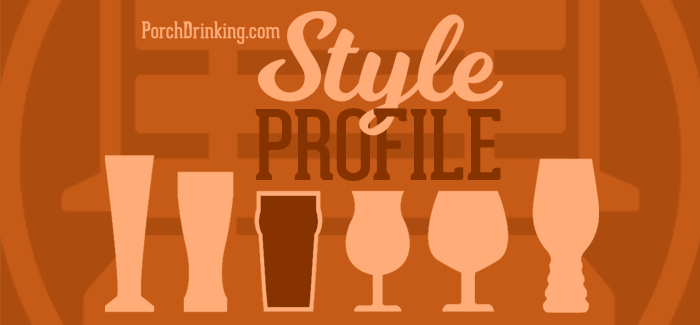

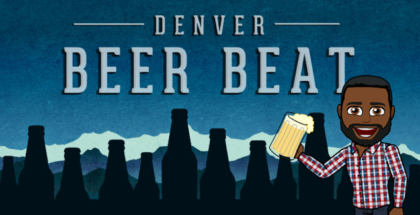
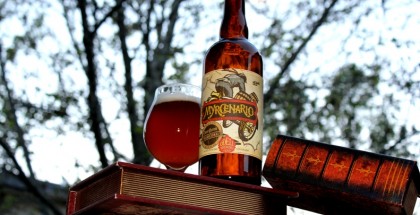
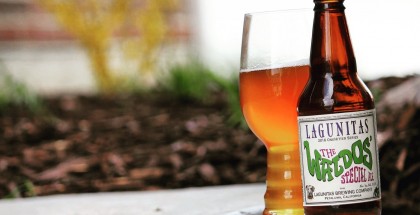
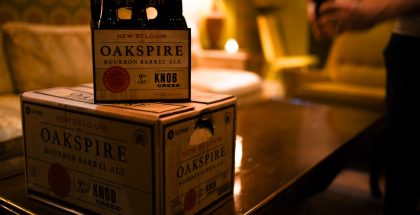
Comments